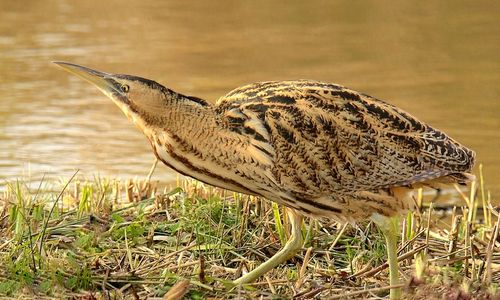Answers For [Forecast Quý 1-2025] - Bittern conservation in the UK
Answers and detail explain for [Forecast Quý 1-2025] - Bittern conservation in the UK
EXPLAIN
[Forecast Quý 1-2025] - Bittern conservation in the UK

Today I'm here to talk to you about one of the United Kingdom's rarest birds, the bittern.
This bird has, in recent years, made a comeback.
The number of breeding males is estimated to have risen to over 170, up from just 11 twenty years ago.
This is still a very small number,and protection and conservation of this creature continues to be an important goal for wildlife advocacy groups in the UK.
Many people have never seen this bird, even though it is native to England.
It is a shy bird, with its markings in its feathers that help it to blend in with its surroundings.
1One notable feature of this bird is its distinctive booming sound, which the males use in spring, the breeding season, to attract a mate.
Even from along distance away, it can be heard.
The bittern is facing great threats to its survival due to global warming and habitat destruction.
It has had a difficult history.
2As far back as the 10th to 15th centuries, this beautiful bird was hunted by the rich to be eaten as an expensive food on special occasions.
In the 16th century, as demand for hunting trophies to display on the walls of great houses grew, the number of bitterns declined.
3Many would hunt the bittern, shooting it down from the air or among the reeds of its wetland home, just to serve as a decoration in their homes.
It was greatly sought after by collectors. What a great loss for such a small reward!
The bittern used to live in the marshy wetlands where it could hide among the reeds.
4But during the 18th century, the natural habitat of the bittern was slowly destroyed as construction increased and agriculture expanded across the British Isles.
Reedbeds were abandoned or drained in the name of progress, and the bittern gradually lost its home.
5Currently, studies have been done on the natural habitat of the bittern, and many scientists and conservationists believe that global warming plays a big part in causing the damages to the bittern's living areas.
6Also, the resultant sea level rise causes tides to rise, which leads to their freshwater habitats being fled with salt, which can affect their rate of reproduction.
This would be a great blow to the population of these birds which are already struggling to make a comeback.
The focus of the conservation for these creatures has shifted from creating reedbeds and marshes for them to breed, to ensuring they have enough food.
7Conservationists are focusing on encouraging some kind of fish to move back and inhabit the reedbeds.
thereby causing the bitterns to continue inhabiting these areas, and breeding to increase numbers.
Bitterns also eat insects and small frogs, which are common in the reedbeds.
8Today, the natural breeding sites for bitterns in the nature reserves are unfortunately small in size.
but new reedbeds have been created in some areas, to provide a greater space for the bitterns to live.
I am pleased to report that many of the sites that have been improved or created have recorded an increase in the number of breeding males.
9Bitterns, like all wildlife around the world, continue to face threats from many sources, including pollution that contains certain hazardous chemicals, which usually come from nearby factories.
They harm the health of all creatures, and emissions of them need to be limited, which we can all play a part in.
10In conclusion, conservation can aid in building up the declining number of the bittern, but they still face many risks.
There is something we can all learn from this.
Many other species around the world, and here in the UK, are in danger because of human interference.
Some creatures have become extinct, and no amount of conservation by us can bring them back.
Let's all work hard to ensure no more animals are lost, but, like the bittern, are protected.
Questions 1-10
Complete the notes below. Write ONE WORD ONLY for each answer.
Bittern conservation in the UK
Feature of Bitterns
-
Male bitterns make special 1 (sound) in spring to mate.
History of Bitterns
10th-15th century
-
Some people took bitterns as a kind of luxury 2 (food) .
16th century
-
Bitterns were killed for house 3 (decoration) .
18th century
-
Bitterns’ habitat was replaced by the areas for construction and 4 (agriculture) .
Current research findings
-
Global warming contributes a lot to the 5 (damages) to their habitat.
-
Water mixed with salt affects their 6 (reproduction) .
-
Bringing back a type of 7 (fish) as food source in the reeds is important.
-
Nowadays, bitterns breed in small nature 8 (reserves) .
-
Bitterns are facing various threats (e.g. pollution with dangerous 9 (chemicals) ).
Conclusion
-
Conservation has saved many bitterns but 10 (risks) still exist.